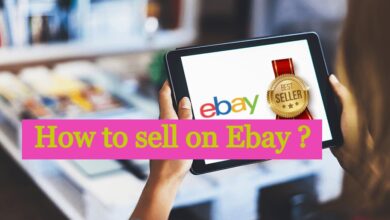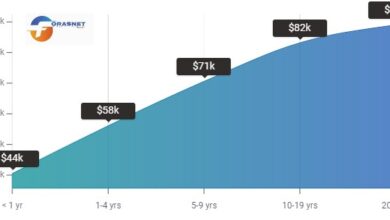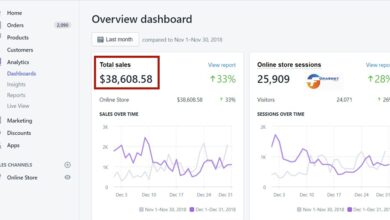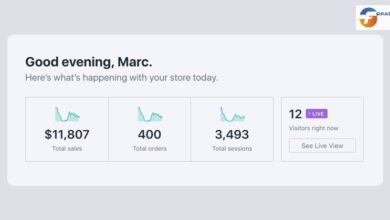How to sell on Etsy 2023
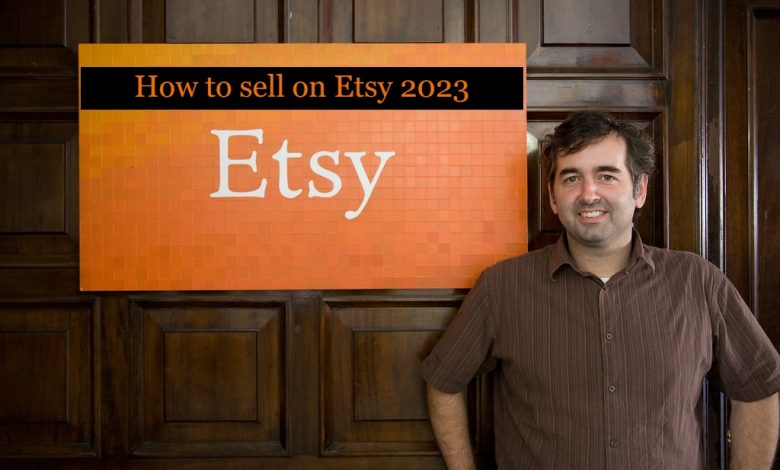
How to sell on Etsy 2023
Introduction
If you’re just getting started and want to sell on Etsy, the first step is signing up for an account. We’ll walk you through the process of creating your shop, setting up shipping profiles, and promoting it to buyers in search results. Once your store is set up, it’s time to get listed!
1. Sign up for an Etsy account
- Sign up for an Etsy account
- Fill out the form and submit it to receive an email with a link to your newly created Etsy shop
- Click on the link in that email, then follow its instructions to create a new product listing, or edit an existing one (if you’ve already created one)
2. Create your shop
- Create your shop
Etsy’s storefront is a beautiful, easy-to-use interface that lets you showcase the best of what your shop has to offer. You can create an account, upload images, and add text all in one place.
Once you have a shop up and running on Etsy, it’s time to get started marketing! Here are some tips for getting started:
3. Interview yourself about your business
- Interview yourself about your business
Now that you have a solid idea of what your creative products are, it’s time to craft the perfect pitch for Etsy. Before you start writing, take a minute and think about what makes you unique as an artist or maker and how those traits can be translated into compelling copy for potential customers. For example, if there’s one quality that sets apart all of your work from others’, make sure it’s part of this section! This can help give potential buyers some insight into how much effort goes into producing each piece—and may even help them see themselves in said product!
Next up: interviewing yourself—or rather asking questions like “What is my business philosophy?” or “Why should people buy from me?” or even something more personal like “What are some hobbies/interests I have?
4. Name your shop and choose a shop title and announcement
- Name your shop. You can name your shop whatever you want, but it’s a good idea to stick with something that reflects both the product you sell and how shoppers will feel about purchasing from you. For example, if you sell handmade jewelry, then maybe try “Handmade Jewelry by Kandi” or something similar.
- Choose a shop title and announcement. This is where Etsy users will see all notifications for sales and new products in their Etsy dashboards (or feed). The title should be short but descriptive enough that people know what they will find when they visit this page (e.g., “Handmade Jewelry by Kandi”). You could also include tags or categories under which items are sold—for example: “Handmade Jewellery,” “Arts & Crafts.”
5. Choose your language and currency, and get the legal stuff out of the way
Now that you’ve got your design, name and description ready, it’s time to get the legal stuff out of the way.
You’ll want to choose a language for Etsy’s sellers platform—Etsy has several options available (and if you’re selling internationally, more than one). The most important choice here is going to be which country’s law applies to your business: American or European? If you’re selling goods in Europe but not America (or vice versa), it may make sense for your shop name and listing descriptions on both platforms reflect this truth by using words like “Europe” instead of “USA.” However, there are no rules about how much care should be taken with these things; just make sure that whatever information is shared between platforms does not violate any laws or regulations from either side—for example: “[Your] shop’s IP address could be traced back through [your] server” would probably not pass muster because it contains an incorrect phrase!
6. Get promoted on Etsy‘s search engine.
- Update your shop’s details.
- Add an image of your product or service and make sure it has the right dimensions, so that Etsy can easily display it in their search engine.
- Once you’re happy with the new look of your shop, upload some photos of the products on offer and add a description below each one—this will help potential buyers find what they are looking for more quickly when they search through Etsy’s website.
7. Set up billing and payment methods, and configure shipping profiles
- Set up a payment processor like PayPal
- Set up shipping profiles.
- Configure your shipping calculator.
- Set up your shop policies, such as policies regarding the sale of products made from endangered species, or the sale of items that are made using child labor.
- Create a shop page, including banners and homepage images (you can do this by clicking ‘Shop’ in Etsy’s main navigation bar and choosing ‘Shop Pages’). You’ll also want to create categories for each product you sell if you plan on selling more than one type at once!
8. Start adding listings to your shop!
Now that you’re all set up as an Etsy seller, it’s time to start selling! There are a few things that you need to do before you can start selling on Etsy:
- First and foremost, create a listing for each item in your shop. You’ll want to add a product image, description and price information before adding any sort of other information like categories or tags (more on those later).
- After creating your listings and saving them in their respective galleries—which we’ll get into later—you’ll want to add them as “products” in the main menu at the top right corner of any page within your shop (this will also help protect against duplicate listings).
- You can also add these listings directly from within each gallery itself by clicking on “add products” under each image; this will bring up another window where they can be added with prices listed above each item’s price field
Etsy is a great place to start an online store, here’s how to get started
Etsy is a great place to start an online store, so here’s how to get started:
- Sign up for an Etsy account. If you already have a business website, or if you aren’t sure whether it’s right for you, try setting one up on the Etsy website first. It won’t take long and will give you access to features like Shopify integration and more sales tools than they offer at their own site (like PayPal).
- Create your shop by filling out all of the information requested at signup—name your shop, choose a shop title/tagline and announcement text (if applicable), confirm payment details with PayPal or credit card processing providers such as Stripe or Square Cash Card Reader Appletizer etc.. Once completed, click “Continue” near top right corner of window where there should be some sort of preview image indicating success in this step which I cannot find but it may come up when logged into account later today once we finish installing apps needed for selling products through our store’s website built using Google Sites WordPress Plugin Starter Theme Responsive Design Template Themeforest How To Build A Website Using The Google Sites Hosting Platform Free Downloadable Templates For Your Next Project!
There you have it, a quick and easy guide to selling on Etsy. Now that you know the basics of selling on Etsy, we hope that you’ll be ready to start designing your shop and uploading listings. Happy selling!
Strategy to sell on Etsy
Etsy is a great place to sell your handmade goods and craft supplies. It’s also one of the best places to make money selling online, but if you’re not familiar with the platform, it can take some time to figure out how to get started and make sales. In this article we’ll walk through some tips for maximizing your success on Etsy so that your shop becomes an easy way for people to buy what they need!
Creating a great business name
When you’re creating your Etsy business name, it’s important that you choose one that is easy to remember and spell. It should also be easy to pronounce. And don’t forget about the fact that it has to be legible for potential buyers!
If possible, try using a word or phrase that sounds like what you do or sell on Etsy—for example: “Handmade in California” instead of “Handmade in California Goods.” This way people who type this into search engines can find your site much faster than they would if they had typed out some random combination of letters and numbers (like “japan”).
Setting up your store
- Choose a name for your shop. The first thing you should do is choose a name for your store that’s easy to remember, spell and doesn’t already belong to someone else. You can also use this opportunity to create an acronym of sorts—like “Pantone13” (for Pantone), or even the much-loved “cute” option like “cupsquare.” If there are any keywords associated with what you’re selling (e.g., “handmade”), then make sure those words appear somewhere in the title as well so shoppers know where exactly they’re looking when browsing through Etsy searches on Google or Bing!
Creating a supply list
- List the materials you will need to create your product.
- List the materials you already have and can use again, such as fabric or yarn.
- List any tools that are required for this project, such as an iron or sewing machine.
- List any other items that may be helpful in creating this product, such as thread or glue gun (if appropriate).
Taking photos
- Take pictures in natural light, with your subject close to the camera. This will give the most flattering photos, and it’s also easier to adjust them later on if you need to crop out something or change a part of the picture.
- Use a tripod for stability and ease of use. You may not have one yet, but if you do have one then this tip is for you!
- Use a timer or remote control for better results (unless your subject doesn’t move around much). The best way I’ve found is by using my phone as an intervalometer: I set my phone running its timer app so that every 2 minutes I get another photo opportunity with my subject(s) at hand—and then when they’re ready again I just hit “shoot” again! It works really well at keeping everyone calm while still getting good shots throughout their process; plus there’s no stress involved either since everything happens naturally without having someone constantly yelling instructions at us like we’re some kind of alien species who can’t communicate properly unless someone else speaks English first before translating into another language like French into English.”
Figuring out pricing
Once you’ve decided on your product and the materials you’ll use, it’s time to determine what price point makes sense for your product. The first step is figuring out how much buyers will be willing to pay for it. Use a pricing calculator or even just an online store like Etsy itself (which has an excellent tool for counting up all of its current listings) as a reference point.
Once you know what customers are willing to pay, then look at the cost of materials and labor involved in making your product. You should also take into account how much profit there might be left over after selling each item—this can help inform other decisions about whether or not it’s worth manufacturing more than one batch at once or if perhaps not selling anything at all would be better overall from an economic standpoint!
Create great product listings for your shop
- Use keywords in your product titles
- Use keywords in your product descriptions
- Use keywords in your tags
Write an amazing bio for your Etsy shop
Your Etsy shop is your online presence. It’s the first thing potential customers see, and it’s also what they’ll be choosing to buy from when they visit your website.
Your bio should be engaging, clear and concise. It should also be grammatically correct (don’t use “I” instead of “you”). Finally, make sure it’s well written—don’t rely on a template or autopilot writing tools; do some research into how people write their bios online so that yours has the same feel!
Utilize the power of keywords in your Etsy shop
When it comes to SEO, Etsy is one of the best places to start. The search engine rankings for Etsy shops are very high and have been steadily rising over time, which means that more people are finding your shop when they search for a specific keyword or phrase in Google’s search bar.
To take advantage of this opportunity, you should use keywords on all of your listings so that you can make sure that customers see your products when searching for what they need. You should also try using additional phrases such as “handmade” or “customized” along with those main ones so that people know exactly what kind of item they’re buying before clicking through any further pages on their browsing experience (and hopefully making a purchase).
With these tips, you’ll be on your way to selling a lot of products.
In just a few short weeks, you will be able to sell a lot of products. You’ll also be making money in the process! And if that isn’t enough, because your Etsy shop will be growing so quickly, it’s very likely that you’ll end up with more options than what can fit into your first storefront.
And this is just the tip of the iceberg when it comes to how successful selling on Etsy can be for small businesses like yours. The possibilities are endless when it comes down to how much value your customers are getting from shopping at your site (and how much money they’re spending).
Conclusion
We hope you’ve found some useful tips in this article. We know that it’s not always easy to start your own business, so we want to make sure that you have the tools and knowledge needed to succeed at Etsy.
READ MORE : How to sell on ebay

